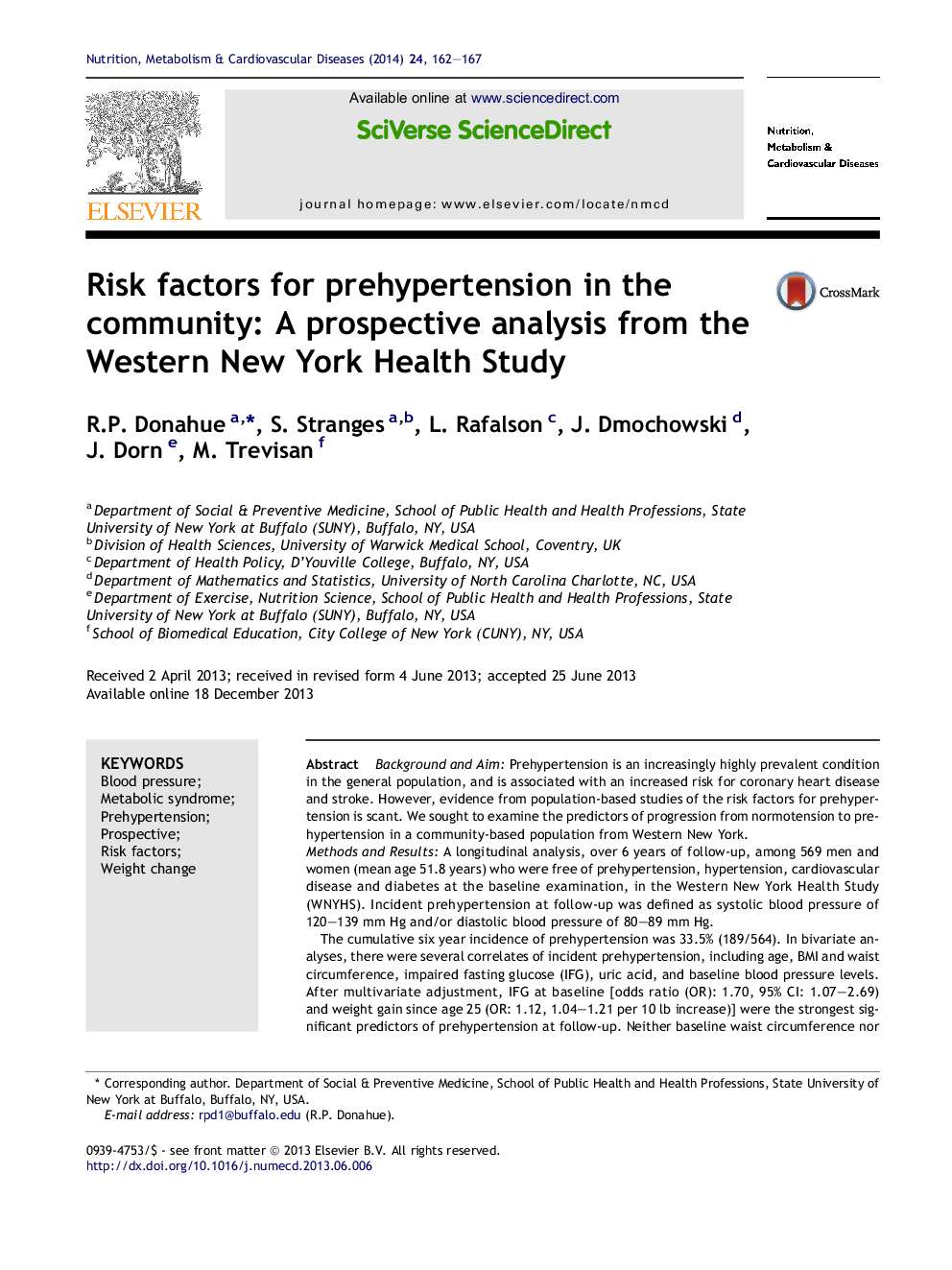| Article ID | Journal | Published Year | Pages | File Type |
|---|---|---|---|---|
| 3002135 | Nutrition, Metabolism and Cardiovascular Diseases | 2014 | 6 Pages |
Background and AimPrehypertension is an increasingly highly prevalent condition in the general population, and is associated with an increased risk for coronary heart disease and stroke. However, evidence from population-based studies of the risk factors for prehypertension is scant. We sought to examine the predictors of progression from normotension to prehypertension in a community-based population from Western New York.Methods and ResultsA longitudinal analysis, over 6 years of follow-up, among 569 men and women (mean age 51.8 years) who were free of prehypertension, hypertension, cardiovascular disease and diabetes at the baseline examination, in the Western New York Health Study (WNYHS). Incident prehypertension at follow-up was defined as systolic blood pressure of 120–139 mm Hg and/or diastolic blood pressure of 80–89 mm Hg.The cumulative six year incidence of prehypertension was 33.5% (189/564). In bivariate analyses, there were several correlates of incident prehypertension, including age, BMI and waist circumference, impaired fasting glucose (IFG), uric acid, and baseline blood pressure levels. After multivariate adjustment, IFG at baseline [odds ratio (OR): 1.70, 95% CI: 1.07–2.69) and weight gain since age 25 (OR: 1.12, 1.04–1.21 per 10 lb increase)] were the strongest significant predictors of prehypertension at follow-up. Neither baseline waist circumference nor change in BMI were predictor variables in models when they were substituted for weight gain.ConclusionsResults from this study suggest early dysregulation of glucose metabolism and weight gain over the lifespan may represent important risk factors for prehypertension in the general population.
